I received a distressed note from a reader recently that I wanted to share with you all because when your paint colour looks wrong, the light continues to be your favourite scapegoat. Despite feeling like I sound like a broken record, I’ll say it again for the folks in the back:
It’s hardly ever the light that turned your paint colour against you.
Sorry, but the magical mysteries of light are not to blame for every colour mishap. And because I love you and want to free you from this disempowering belief, here’s the real reason your wall colour looks wrong.

But first, here is her note:
I bought a new house last year. The previous owner had the entire interior painted the same colors. Sadly left no paint cans but the closest match is Agreeable Gray on EVERY wall and White Dove on trim. In one sense this was a blessing because we could move right in and the colors were neutral enough that it didn’t grossly clash with our existing furniture. Now we are working to make the house more our own, which has involved a fair amount of painting.Here’s the question:I have an entryway/mudroom/hallway area that has two glass-paned doors at either end. One is northwest facing and the other is southeast facing (I’m in New England). There are also 3 recessed lights. The space is pretty narrow and not well suited to floor or table lamps. It’s more of a pass-through area. The flooring is a basic gray tile with a blue undertone.My problem is that the Agreeable Gray is such a chameleon. At some times of the day it seems to be compatible with the tile and at other times it completely clashes. I’m struggling to find an appropriate color that complements the tile all day long given the change in natural light. Is that even possible? We are not interested in changing the tile at this time. Perhaps I should just get some bold paintings to distract myself!

Here’s the thing, it’s not a trick of the light.
Why does my wall colour look wrong?
The real reason your wall colour looks green is because it has a GREEN undertone. If you want it to relate perfectly to the tile, you’ll need a grey with a BLUE undertone. What you are seeing when the light is bright and direct is the true colour. Sherwin-Williams Agreeable Gray is a green grey. And when the space is brightly lit, that’s when you can see that the floor is blue grey and the walls are green grey.
It’s really that simple. And it’s the essence of my system for Understanding Undertones®.
Sure, there are some relatively rare exceptions related to problems with strong reflections. But, whenever someone says to me, “Maria, the light changed my colour to pink [or blue, or green or purple]!” Well, it’s not the light and nearly always because they chose the wrong undertone. And when you combine the wrong undertone with other neutrals in their space, the colour will look too pink, or blue, or green, etc.
Why does this happen? Because the subtle undertones of neutrals are just that, SUBTLE. So in order to get them right, you need a method or a process that works. Lucky for you, I’ve already created it.
How do you choose the right neutral?
The best way to choose neutrals accurately is to:
1. Learn my System for Specifying Colour and Understanding Undertones. Instead of the overwhelming world of neutrals and whites, you’ll be equipped with only the most useful paint colours broken down into a digestible and functional range that includes the 5 undertones of beige, taupe, and 3 undertones of grey. I recommend that you read my ebooks for an excellent introduction into my system and a list of my most useful colours, neutrals and whites.
And then, if you want to start your journey to colour mastery (aka know precisely how to distinguish complex neutral undertones and know how to make the right colour choices) sign up for one of my Virtual Specify Colour with Confidence workshops.
2. Learn how to properly test and compare colour. Comparison is the key to getting colour right. And, in order to get to the level of accuracy required for the subtleties of undertones, proper testing is required. Again, we will spend extensive time learning (with several hands-on exercises) how to test and compare colour in my Virtual Specify Colour with Confidence workshop.
Because without this knowledge, you are just guessing and stuck blaming the light when you don’t get it quite right.
It doesn’t need to be this way. I was once in your shoes, guessing (stressing) and hoping to get the colour right. And, that’s what I want to save you from. I created my system with step-by-step processes so I could work smarter – and ultimately make better colour choices. You can learn these steps too and apply them to decisions about colour for any project.
What’s the right neutral for this room?
All that said, a pale green grey like Agreeable Gray is a nice, versatile backdrop for decorating as my reader noted. And technically, blue grey and green grey can play well together.
In this current trend for warmer, but fresher, kitchens you see pale green grey cabinets with blue grey carrara marble countertops everywhere. In this kitchen below, it’s the beautiful details and styling that really make it pretty. You don’t notice the relationship between the two different undertones of grey when there are so many decorating accents and details that pull this room together.
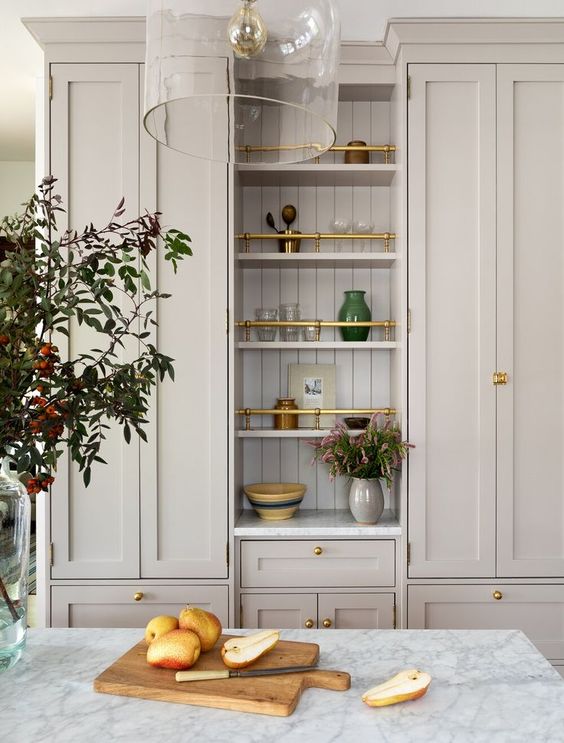
Green grey and marble kitchen by @heigicaillierdesign
What’s the easiest way to fix my wall colour?
The problem when you are looking at a space with nothing in it is that your eye isn’t satisfied. In a blank, unstyled room you are only going to notice the stark relationship between two slightly different neutrals. Those competing neutrals are the only thing you see. But your eye, on the other hand, desires complete harmony between those colours. It’s a one-two relationship that isn’t perfect yet.
But, you can easily create some serious magic with decorating and details. Suddenly, your eye has more interesting things to focus on in the room. And that means you are longer cranky that your neutrals aren’t spot on.
You can see in this foyer below that the blue grey floor tile doesn’t perfectly relate to the green grey walls. However, the pretty hardware, lighting and styling distract us nicely from that mismatch of undertones.

This mismatch of grey undertones happened constantly all throughout the grey trend. And the ones that got away with it are invariably the ones who are excellent decorators and stylists. Remember, magazine-worthy designs cannot be easily replicated.
So my reader is absolutely right. She should put up some artwork, a pretty rug and create some magic to distract herself. Because if she is just getting to know the house and getting settled, overall the paint is inoffensive with her furnishings. It’s a much better solution to get busy decorating than to begin repainting the whole house. Would you agree?
A pretty runner rug is a great way to add colour, pattern and interest to a slim passageway. Mirrors, artwork, and sconces are great style additions too. Focus on the details and colour of the doors themselves and look for ways to draw the eye through openings by creating interesting focal points directly across in the next room. Need a little help shopping for home decor? Try this.
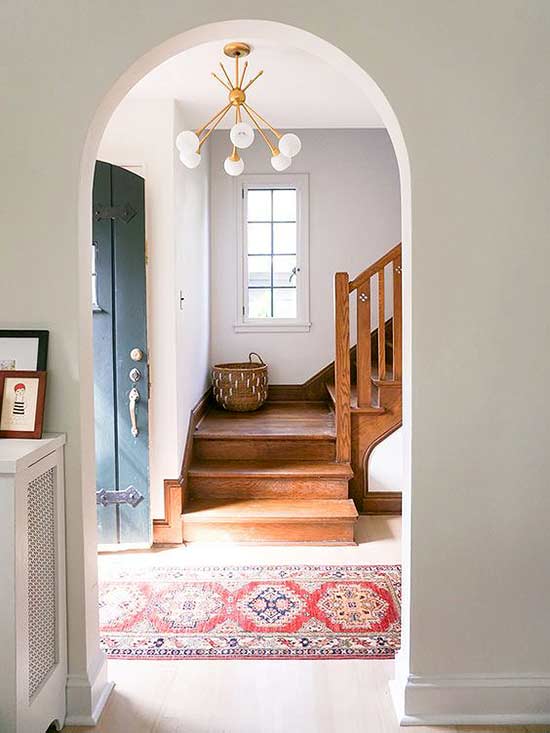
You don’t need a lot of space to add a small vignette. Consider hanging an intriguing piece of artwork over a small console at the end of the hall to draw the eye back.
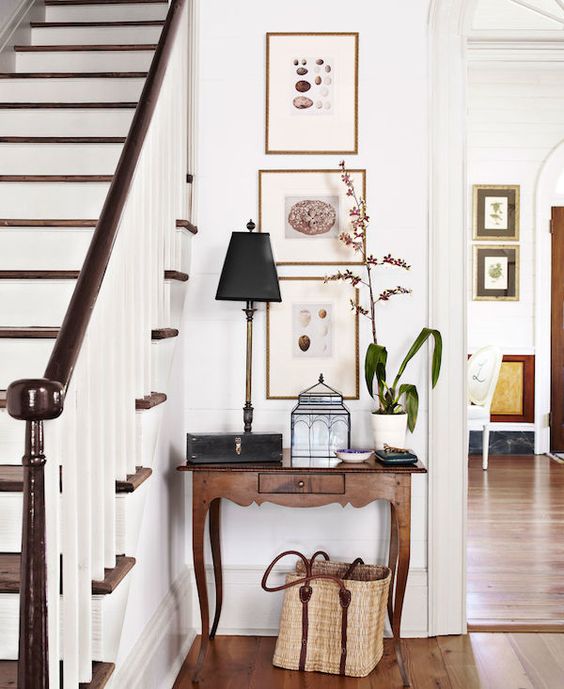
Passageways or entryways, with their limited space for decorating, are also great places to add interest with patterned wallpaper.
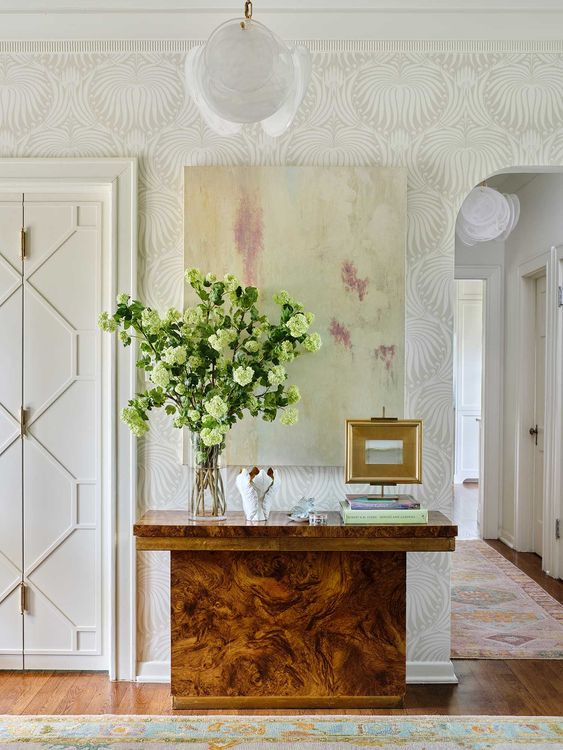
So, again, unless you have a rare reflection situation, your unhappy wall colour is rarely the fault of the light. And even if the paint colour is doing something unexpected, the best fix is to get busy decorating immediately! Doesn’t that sound more fun than repainting?
To get customized help choosing a paint colour for your home, buy my eDesign services here.
Related Posts:

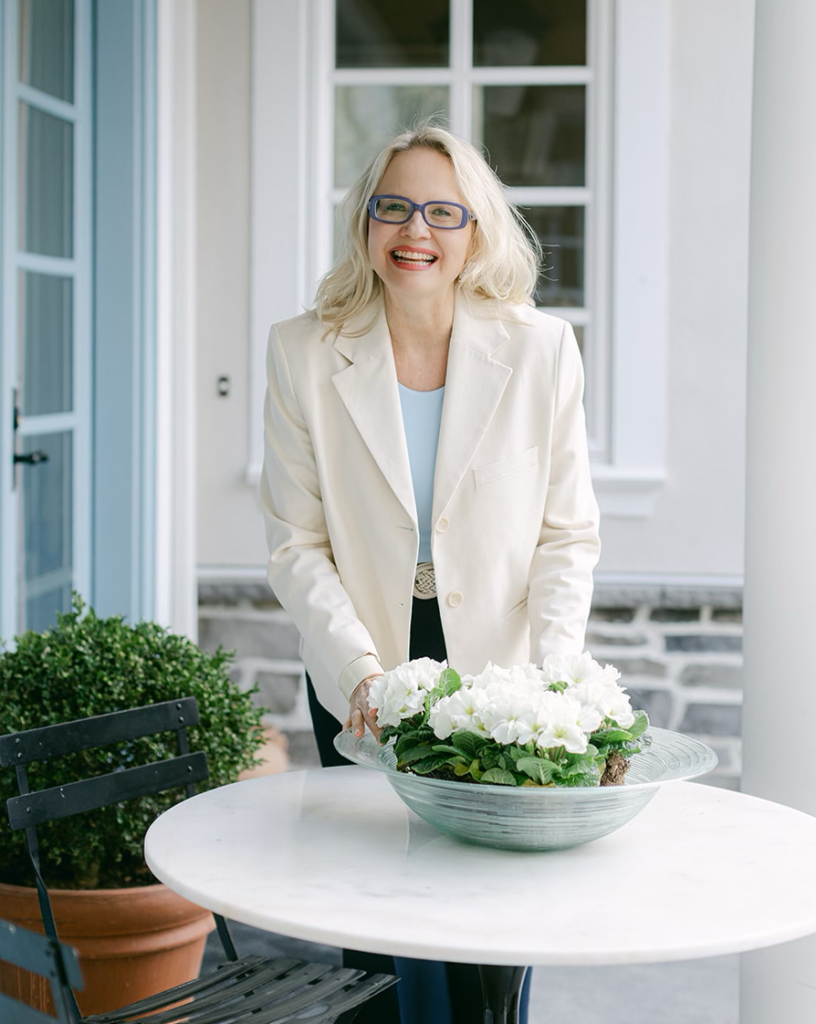


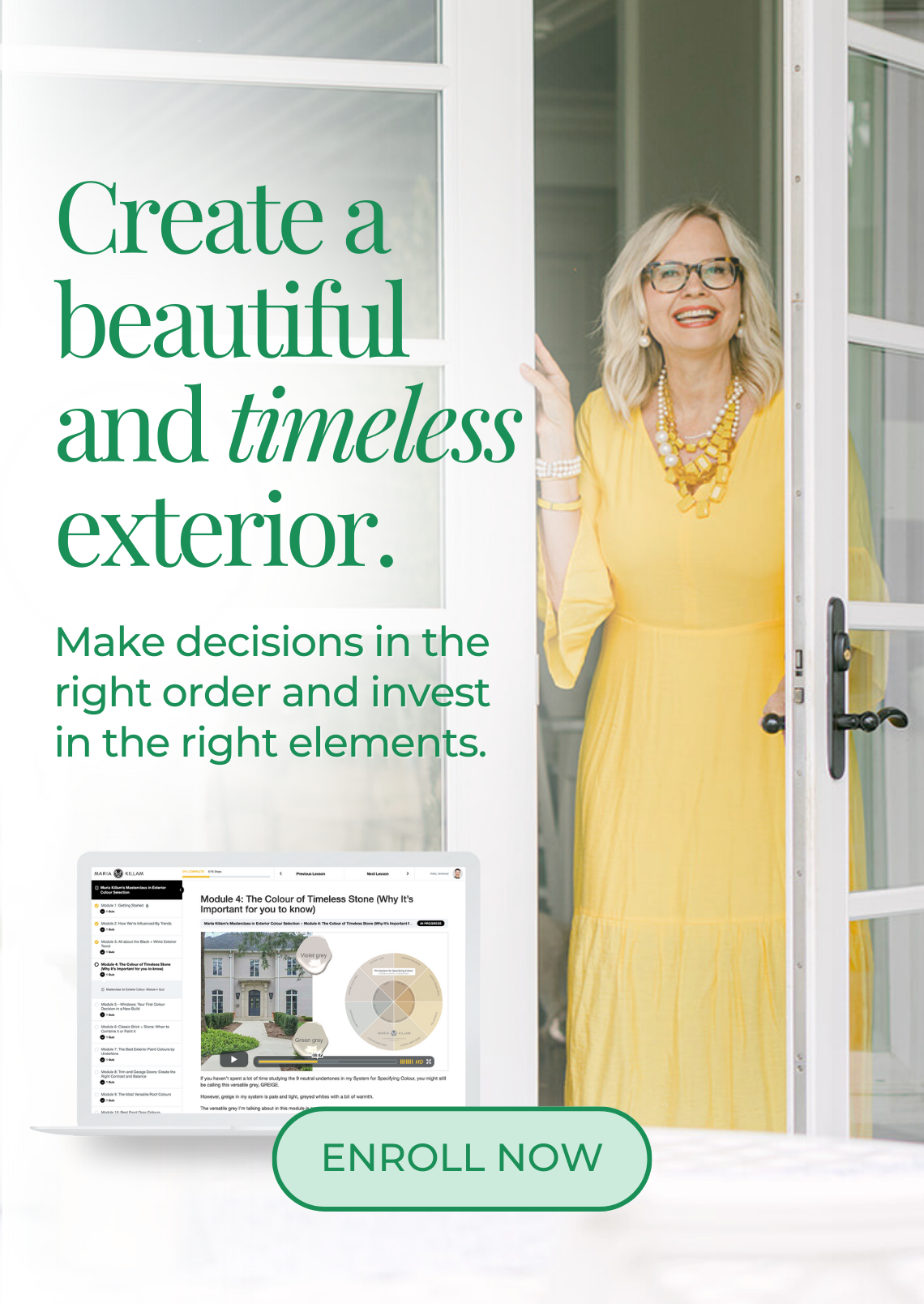
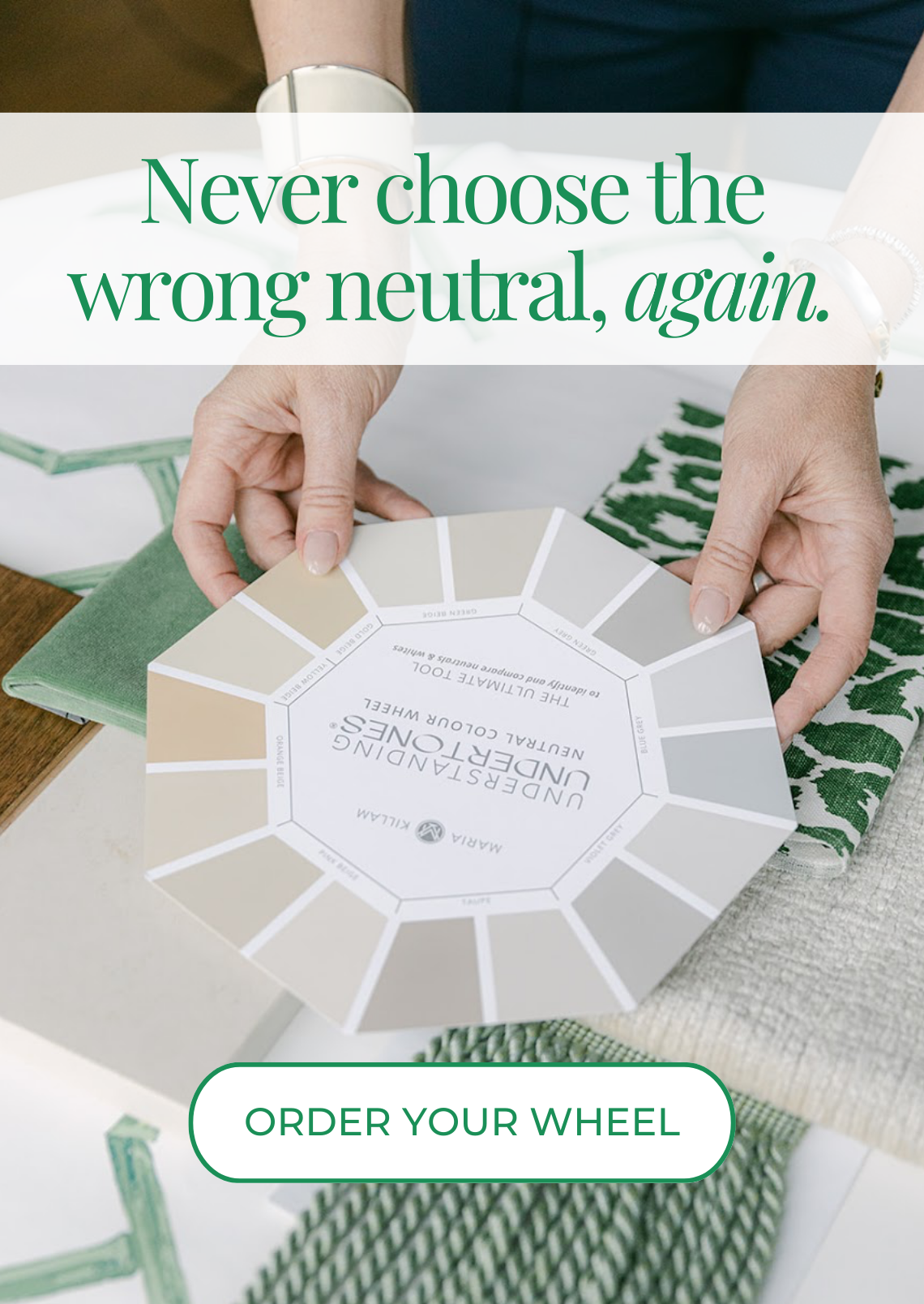
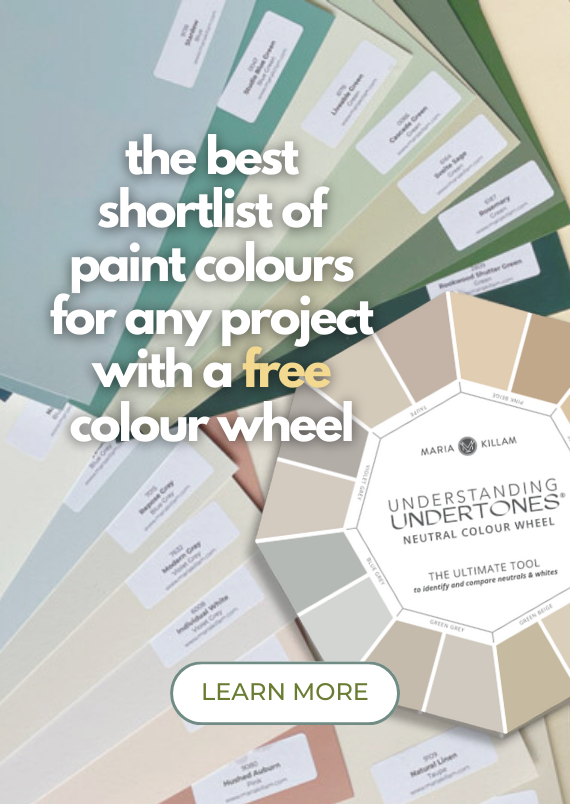

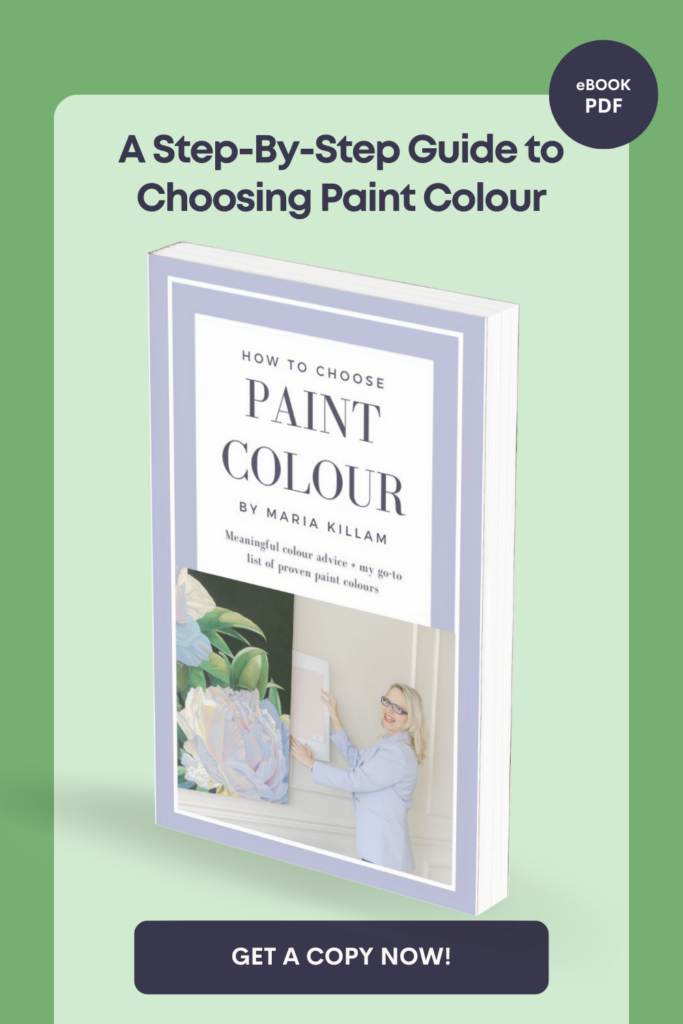

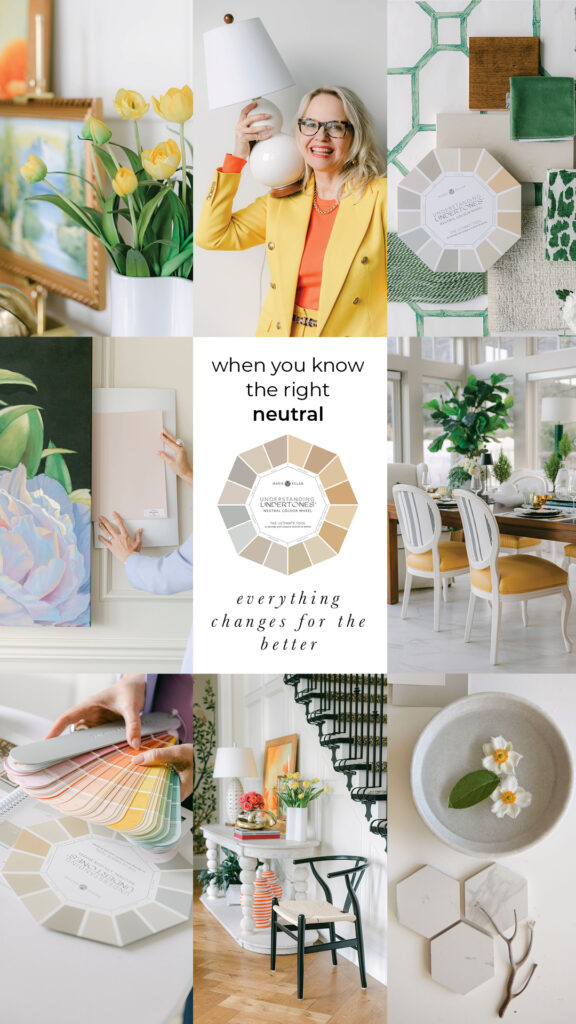

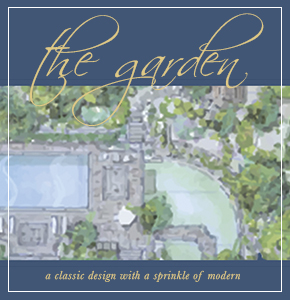



The Agreeable Gray isn’t bothering me at all with that floor. I feel that stone floor has both blue-gray and green-gray in it. At least on my computer it does.
I agree 100% ! Are we wrong?
Yes I agree Lorri, I tried to find the best image I could to illustrate the point, but I’m guessing her space (the photo I don’t have) has strictly blue grey tiles. Maria
Maria, I like the fact that you suggest decorating instead of painting. Not everyone has the budget to throw down the cash (or has the time) to repaint and styling can make all the difference. I just did my open concept space in Agreeable Gray and I love it! There isn’t a hint of anything but green in it and in full light it almost looks like a greige. I’m decorating with Navy Blue accents and agreeable Gray is just a nice, comforting color. That being said, if the paint job bothered me that bad, I’d repaint.
Maria, could the white trim in between the two colours contribute to the perception that they’re clashing?
What if she painted the door a deep colour to match the floor–something blueish/greenish/greyish? Would that blend everything together? If so, would she be able to get away with painting the door and surrounding windowframes this colour, but leaving the baseboards white?
I love the idea of painting the door as you suggested, Michelle!
Hi Maria. Thank you for the sane advice. I sometime find that I don’t see the subtleties of neutral undertones until I look at a picture of the space. Is that weird? Does that happen to anyone else?
I think the bigger problem is the cool tile floor clashing with the orange wood in the adjoining room.
The example I’m showing is not the room from my readers dilemma. She sent the question and I found this image to illustrate the point. Maria
I’ve read what Maria has written on this topic before but it is explained especially clearly here and the styling information is very helpful. A post I am going to bookmark.
Maria, nine years ago you told me that with Carrara marble counters I needed Chantilly Lace cabinets. You were right; they go perfectly. Maybe other people don’t notice the clash between pale green grey cabs and Carrara marble counters, but I do. Some things don’t change.
What a fantastically clear and straightforward answer here. I agree that this may be your clearest presentation of light and undertones… and the ‘JUST DECORATE, PEOPLE!’ idea yet! Your advice is so freeing! Thank you, Maria.
Since it’s a passthrough foyer, with plenty of light, I would paint it something more dramatic like Farrow and Ball’s Pigeon. That would lessen the contrasting wood floor. Add some art, a lamp or sconce, and a throw rug. The white trim around the door would emphasize the entry. I see that floor as having a lot of green and some blue undertone. The rooms off the foyer will seem really light and big if that small entry is painted a darker colour. There are some great examples of this treatment on Farrow and Ball’s website.
Great advice as always, Maria. I agree with others who say they don’t see the wall color as a problem that demands fixing. I see what the owner is saying, but I would warn her that if she tried to change to another neutral color, the hall is open to the living room, which is also Agreeable Gray. And THAT would bother my eyes more.
I had a similar floor in my previous house and it was a bear!!! It read blue, but there were green undertones in some of the tiles. YIKES. It was bossy, as Maria would say, but it was in a confined space and I chose to ignore it. Or at least I tried.
I think artwork, decorating, would be the way to go. I would also consider painting the door a color, perhaps taking a color from the floor. Not a neutral.
My home is painted all Agreeable Gray on the interior, and just like the photo above, often appears PURPLE- I don’t see the green at all, atl least on my computer. I figured out the problem is probably the warm undertone in my SW Alabaster trim and doors bringing out that purple which bothers me as well, but not so much when there is a colorful sofa and other things to look at in the room. (Thank you, Maria, for saving me from the big gray/beige/white/brown neutral blob of a sofa I almost bought before finding you in the nick of time- best advice ever!)
What color(s) might you recommend, if she were to repaint?
Mike Richter
Great question. In this case, because the floors are blue grey AND blue/green grey either would work, you can find the list of curated greys in either of my ebooks http://www.mariakillam.com/shop-landing-page/
What about the concept that is doesn’t have to perfectly match, it just has to go together. Think of clothes. You don’t always have to have the exact color match, it just has to go. And that’s, as Maria says, where the decorating comes in. Get some other colors and patterns in there and there should be no reason why blue and green undertones shouldn’t work together. Unless of course you just hate the color of the walls, but it’s probably too soon to say in an empty room. I agree with a previous comment, that the wood floors seem to be more of a clash. Maybe the foyer needs some orange in the decor.
This is wonderful advice, and I absolutely love and adore this blog. I found it in the middle of building my home, and it saved me from making many sad mistakes. Thank you so very much, Maria! A couple of editors notes: the tag under the green gray marble kitchen needs to be updated to heidicallierdesign…right now there’s a “g” in heidi, and you have a sentence that reads “you will longer be cranky..” It just needs the “no” put in front of the longer. :). Thanks again for all of the marvelous content!
Great Advice. I do have a question, though. Is it always preferable to match the undertones? I’m really liking the picture of the countertops against the cabinets specifically because it coordinates but is not an exact match. Would I like it better if it was he same undertone? I do like cohesion, generally. Also, a previous commenter said that the orange floor was clashing in one of the pictures. I’ve heard that balancing cool tones and warm tones can make a room look more timeless. True?
When you say blue gray and green gray can work together… can you elaborate on this? So, if one had a blue gray backsplash and green gray (agreeable gray) walls… which undertone would she shop for to decorate? The blue gray or green gray for the rest of her home/furnishings. Thank you